Greg Shaw, 55, Rock Enthusiast Who Loved Underground Music, Dies
By BEN SISARIO
Published: October 27, 2004
Greg Shaw, a rock-music enthusiast, journalist and record label proprietor who was a major force in the spread of underground music and fanzine publishing since the mid-1960's, died on Oct. 19 in Los Angeles, where he lived. He was 55.
The cause was heart failure, said Suzy Shaw, his former wife and a partner in his record label, Bomp.
A passionate historian, connoisseur and promoter of rough-hewn rock 'n' roll from the earliest days of garage rock and punk, Mr. Shaw founded and operated a series of magazines and record labels that had limited sales but much influence. His best known enterprise is Bomp, which began as a five-page mimeograph in January 1970 and grew into a thick fanzine with illustrious correspondents, and then became a label releasing more than 250 albums and singles since 1974 and still in operation, although the magazine closed in the late 1970's.
Mr. Shaw built his recording and publishing business around his tastes. He championed new, innovative groups - including Devo, the Flamin' Groovies, the Germs and the Modern Lovers. Bomp magazine regularly featured detailed histories of regional, nearly forgotten garage-rock bands and music scenes as far away as Sweden.
His good-humored, homemade approach to magazine publishing served as a model for the fanzine boom of the 1970's and 80's, and many of the best-known music zines of the period, like Kicks, Jamz and the Big Takeover, followed Bomp's impassioned amateurism and detailed local reporting.
Born in San Francisco, Mr. Shaw started his publishing career as a teenager with Entmoot, a fanzine devoted to J. R .R. Tolkien. In 1966 he founded Mojo-Navigator Rock 'n' Roll News, which is often cited as a precursor to Rolling Stone. Mojo-Navigator soon closed, but it established Mr. Shaw as a writer and entrepreneur.
While publishing his own fanzines, he contributed to Rolling Stone, Creem, Fusion and others.
Bomp was founded as Duke of Earl, with a plan to use a different song for the title of each issue, though the name Who Put the Bomp - eventually elided into its bare, percussive onomatopoeia - stuck with it from No. 2.
Mr. Shaw often invited well-known journalists to explore their own obsessions as fans. Early issues included a long tribute to the Troggs by Lester Bangs and a study of the Crickets by Greil Marcus.
In the early 70's Mr. Shaw worked at the United Artists label, where he was in charge of the press department and published another magazine, Phonograph Record Magazine, or P.R.M., which was owned by United Artists and was distributed free and had a circulation of 200,000, according to Bomp Records.
Preferring to see himself as "a developer of scenes" rather than a businessman, he once said of his method, "I don't really look for isolated bands. I look for a movement that I think is going in the right direction and then I put my energy behind it."
In recent years Mr. Shaw worked closely with new garage-rock groups like the Warlocks and the Brian Jonestown Massacre.
Besides Suzy Shaw, who is married to Patrick Boissel, another partner in the Bomp family of labels that includes Alive and Total Energy, Mr. Shaw is survived by his wife, Phoebe, and a son, Tristan, both of Los Angeles; and a brother, Robert, of Modesto, Calif.
Suzy Shaw said on Monday that the Bomp label would continue, and that before he died Mr. Shaw signed several new bands.
Bomp History …
From the liner notes of Destination Bomp, issued 1994 – now out of print
“IT WAS 20 YEARS AGO TODAY…” (a reminiscence by Greg Shaw)
…so sang the Beatles, but to this teenager in 1967, no such span was even conceivable-I could barely imagine what next week might be like. Now, it’s the twentieth anniversary of Bomp Records, a label that started as a mere sideline to what I thought was my real calling (ie, editing rock magazines). In that time, Bomp has been not only a survivor but also something of a trend setter, at the ground floor of movements like punk, power pop, and the garage revival. It’s also the only label I can think of that ever kept at it for 20 years without so much as a single hit!
That must be some kind of record in itself. Most indie labels don’t last much longer than it takes for the owner to run out of money (which we’ve come perilously close to more often than I care to remember!). Like any small label, Bomp reflects the efforts, tastes and ambitions of one person: me. There’s no way I can separate the history of Bomp from that of my own life; it’s a legacy of friendships and love affairs, hopes and dreams, crusades and follies, painful mistakes, lessons learned, lives touched. Any resemblance to objectivity in my recollections is purely accidental.
BEGINNINGS
I’ve always been a fan of rock & roll, a collector from about age ten (both records and science fiction) and then a fanzine publisher. As soon as I got out of high school, I left the suburbs for a place of my own in the San Francisco of 1966, where I joined the emerging scene by helping Dave Harris start a little zine (called Mojo-Navigator Rock & Roll News) that grew over two years into a semi-pro music rag, until Rolling Stone came along and I got bored and gave it up. After a couple years’ hiatus, I came back with a more personal zine called Who Put the Bomp. Designed as an alternative to the mainstream music press, it attracted some of the best writers: Lester Bangs, Greil Marcus, Dave Marsh, Mike Saunders, R. Meltzer, et al. I also had some notable co-editors, staff artists and cohorts, including Ken Barnes, Jay Kinney (later editor of Gnosis, of all things), and the legendary Jonh Ingham. We tried to critique pop culture from the perspective of the intelligent fan, as Paul Williams had done in New York with Crawdaddy.
The early ’70s was a formative lull in pop culture, a depressing hangover after the previous decade’s wild party, but also a time when the fan network of true music lovers began taking shape, largely via magazines like Bomp. Esoterica that’s now widely known thanks to garage-psych compilations started to be discovered and classified. Fans like me were given the chance by major labels to help compile their collectors’ series (now a standard practice). Theories of rock were being propounded upon which the aesthetic of “punk” would soon be built.
For its first 5 years, Bomp was about this kind of revisionist rock history, and a clubhouse for those who dreamed of breathing some of the fire of the ’60s back into rock’s wimped-out veins. In addition to publishing Bomp, I wrote countless reviews, articles and even books, appearing in all the zines of the time, from Rolling Stone and Creem to Zigzag and Zygote. In 1972 I moved from San Francisco to Los Angeles, taking a job at United Artists Records and also becoming editor of Phonograph Record Magazine, a tabloid that rivaled Rolling Stone in circulation, thus putting me near the center of the action and providing an overnight education in the music business. At the same time, I had the delightful job of compiling deluxe reissues for UA’s Legendary Masters Series (Fats Domino, Ricky Nelson, Jan & Dean, Shirley & Lee, Ventures, etc, etc, which led to doing a heap of projects for Sire (such as the History of British Rock series, compilations of The Troggs, Pretty Things, Turtles, Paul Anka, etc), thus bringing me to New York on a frequent basis. I was 23.
Thinking back on those years, I can hardly believe I found time for all these activities, but apparently I did. Bomp Magazine was still coming out a couple times a year, now encompassing massive research and discography projects. Little did I know the stage was being set for something very different.
WHAT, ME WORTHY?!
One day in 1974 I was paid a visit Cyril Jordan, whose Flamin’ Groovies were just back from England, and now shopping a batch of magnificent Dave Edmunds- produced songs. Mysteriously, no label was interested. “Why don’t you put it out?” he asked.
The idea was compelling–yet frightening. I had no idea how to be a record company. Didn’t it take millions of dollars? The closest thing to an indie label in those days was Casablanca! But I knew of oldies zines that pressed up rare 45s for their subscribers, and figured I could probably break even on a small pressing. I was also thinking that here was a way to do more than just complain about the dismal state of ’70s rock.
And thus it came to pass. “You Tore Me Down” became the first Bomp single (with the same number series and red-and-yellow label scheme my idol Phil Spector had used for Philles, for you trivia buffs), and I did my best to promote it. There was no college radio; it was the heyday of Eagles-dominated FM, but I managed to get rotation on several dozen stations. We didn’t sell many (there was no distribution, after all), but did rouse the interest of Sire, who signed the band and sent them back to Rockfield to finish an album. I was roped in as “manager” and thus found myself traveling more, just at the time when punk was rearing its head. I witnessed firsthand how a few visionaries can conjure up a vital scene when the timing is right.
This inspired me to hope the same could happen in America. Scenes were indeed emerging, but lacking England’s centralized media and distribution, it was a slow process. Until about 1979 the industry, radio and major media seemed determined to suppress or ignore punk (into which they lumped anyone new, from the Viletones to Nils Lofgren and Tom Petty), leaving a void that Bomp tried to fill. The roster filled up with groups from New York, Boston, London, Ohio,Toronto, and elsewhere.
By 1977 there was a solid scene in Los Angeles too, and Bomp recorded bands including The Weirdos, The Germs and The Zeros, as well as Devo (their 2nd 45, “Satisfaction”, and a planned live album that never happened). We also picked up Iggy Pop’s first solo album, Kill City, when nobody else would touch it, and thus, after a dozen 45s, Bomp entered the 12″ arena.
POWERPOP TO THE PEOPLE!
Punk had already had its day by 1978, when Bomp Magazine ran a cover story proposing Powerpop: a hybrid style with the power and guts of punk, but drawing on a pop song tradition with wider popular appeal. I had in mind bands like The Who and The Easybeats, (hell, even The Sex Pistols fit my definition!) but much to my chagrin, the term was snapped up by legions of limp, second-rate bands hoping the majors would see them as a safe alternative to punk. I took a lot of heat for starting the whole business, but at the same time, some good bands came through and Bomp worked with many of them, including Shoes, 20/20, Paul Collins, The Plimsouls, and The Romantics. These all went from Bomp to major labels, and made some great records.
But the upshot was that Bomp, which had been punk’s first supporter, now had a pop image that we were never entirely able to shake. New Wave was now becoming big business, and given Bomp’s track record, we were being approached by every mercenary wagonband in the land. It was, pardon the expression, starting to gross me out.
DANCING WITH THE DEVIL
At the same time, though, that image helped bring to Bomp some of the artists I’m most proud of having worked with, such as Stiv Bators. Seeking to escape from the punk stereotype into more challenging music, Stiv came to Bomp largely because of our powerpop image (with which he was in complete accord), giving the label some of its most enduringly groovy sounds.
The culmination of Bomp’s flirtation with commerciality came during the years 1980-82, when “new wave” became “rock of the ’80s”, a format writ in dollar signs. Other indie labels (like Slash at Warners and 415 at CBS) were signing with majors, getting the funding to threaten the charts. I was convinced that if I only had the money, Bomp could be the coolest label of them all. (Ah, youth!) Bomp was then the leading unaffiliated indie, and we were courted fervently by labels including Polygram, Epic, Capitol, Elektra, and even Motown. Some of these deals actually got signed, but none proved workable. It seemed they all wanted to take away our creative control, and stop us doing what we did best.
During this period, Bomp came close to scoring a real hit with two extraordinary songs, The Plimsouls’ “A Million Miles Away” and Josie Cotton’s novelty masterpiece, “Johnny Are You Queer?” We’ll never know what might’ve happened if both hadn’t been snapped up by major labels before we had a chance to bring them home (labels that in each case dropped the ball quite stupidly) but it was exciting, and fed into the dream of big-time success that still dangled, carrot-like. After all, as a historian of the business, I felt it was inevitable somehow that a good indie label should leave its mark on the charts, at least once. I wanted to hear my stuff on the radio, and thumb my nose at the big boys. And everyone seemed to be expecting Bomp to do it. Kim Fowley, who’d once dubbed me “the H.G. Wells of rock & roll” was now comparing me to Sam Phillips, meaning the next Elvis was due to swagger through my door, any day now.
ATLAS FRUGGED?
I bought into it for awhile, but with increasing unease. Finally, in 1979, I realized it just wasn’t right, and both folded Bomp Magazine and shut down the Bomp label completely and started a new imprint, Voxx. This label, it was announced, would offer a home to bands working in a purist ’60s garage/punk/psych tradition, with low-budget recording and packaging, no advertising or hype-roots music, of a kind not yet very well known, appealing to a chosen few; anyone that didn’t already know about it, we didn’t want their business! It felt good.
A lot of this was rhetoric, but my desire to exit the commercial rat race certainly wasn’t. What a pleasure it was to tell pestering managers that “we’re only signing neo-psychedelic garage punk” and watch them try to convince me their Huey Lewis clone could fit that mold. Eventually, they left us alone.
At first it was a struggle to find bands to put on Voxx, but we got off to a good start with The Crawdaddys, Plan 9, Jon & the Nightriders, The Barracudas, and a contest to find new talent in the genre that resulted in the first of four Battle of the Garages comps. The label thrived, and became our primary outlet throughout the ’80s.
Fortunately, a vital scene was destined to emerge from this once-esoteric domain. By 1984 the country was swarming with great bands like The Fuzztones, The Lyres, The Chesterfield Kings, The Vipers and The Pandoras. L.A. was at the movement’s core, and Voxx attracted all the best groups. Working at Gary Stern’s Silvery Moon studio, where Gary provided a perfect environment and the kind of understanding of the music that allowed things to happen in the best lo-fi manner, we made classic albums with The Gravedigger V, The Tell-Tale Hearts, The Miracle Workers, The Pandoras, The Eyes of Mind, The Things, and many more. We also opened the Cavern Club, which every weekend offered real ’60s music to a devoted coterie of young fans.
This scene thrived for 2 or 3 years at its peak, fueled by another project I’d launched in the late ’70s, a series of compilations featuring some of the rarest original ’60s punk records from my own collection: Pebbles. By now, Pebbles has racked up something like 100 volumes (including related series). Much of the material that the neo-garage movement relied on was learned from these albums.
I enjoyed the synergism of the whole process, and rejoiced when some obscure classic like “Let’s Talk About Girls” (The Grodes), which never got much beyond Tucson in 1966, became a hit at last in the hands of someone like The Undertones. The Cramps also learned a few songs from Pebbles, like “Green Fuzz” and “Primitive”. It proved that we fans could have a real influence, despite corporate efforts to dictate popular taste.
Since 1987 Voxx has been in eclipse, though it began a comeback of sorts in 1996 with new releases by The Laughing Sky, The Morlocks, etc. But the main thrust was with the revived Bomp, seeking its place in contemporary rock once more. Though often branded with a “retro” image, in recent years we’ve dabbled in everything from industrial to gothic to speedmetal to grunge (though I’ve largely avoided the latter trend, which bores me as profoundly as hardcore did). We’ve also brought to America some great English bands: Spacemen 3, Darkside, Blair 1523, Alpha Stone, and The Hangman’s Beautiful Daughters.
Bomp has brought out a lot of previously-unreleased ’70s punk (Dead Boys, Heartbreakers, Zeros, etc) and we’re now recreating the Pebbles series from scratch. Also, our huge archive of Stooges outtakes is seeing release in the Iguana Chronicles series. And we still take on occasional new bands, such as The Brian Jonestown Massacre, Warlocks, Dreadful Yawns, Black Lips, BBQ, Konks etc. In 1993 we affiliated with Patrick Boissel’s Alive Naturalsound, whose catalog includes Black Keys, Two Gallants, Bloody Hollies, Soledad Brothers, SSM, Radio Moscow, and much more.
LET’S WIND THIS UP..
I’m often asked what makes Bomp different. One answer is that where most labels concentrate on a small roster, I’ve always preferred to give a lot of bands the chance to be heard. That’s one thing that sets us apart. Another is our singularly consistent lack of success; after 20 years, I think it calls for some kind of conspiracy theory.
I guess I’d most like Bomp to be remembered as a label utterly dedicated to the people who care most about music: the fans and collectors. When Patti Smith said “We created it, let’s take it over” those were fighting words; that’s where the battle lines were drawn. While in today’s world of institutionalized “alternative” music it may seem moot, it was a tough struggle, which I like to think Bomp had something to do with winning.





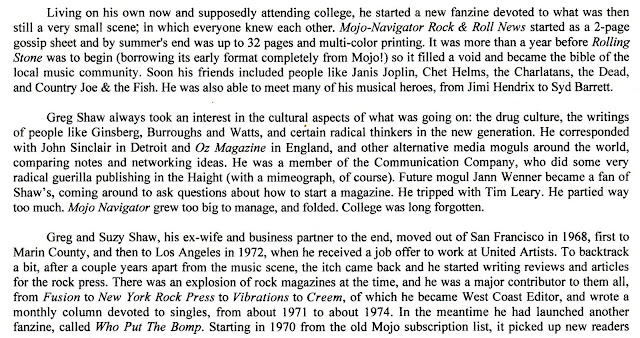
















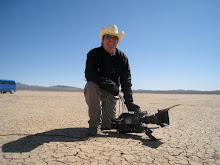


























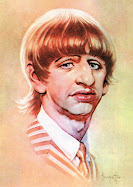






















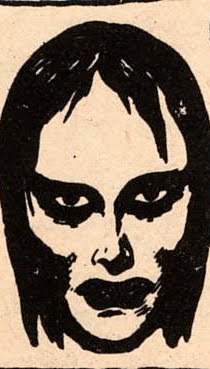









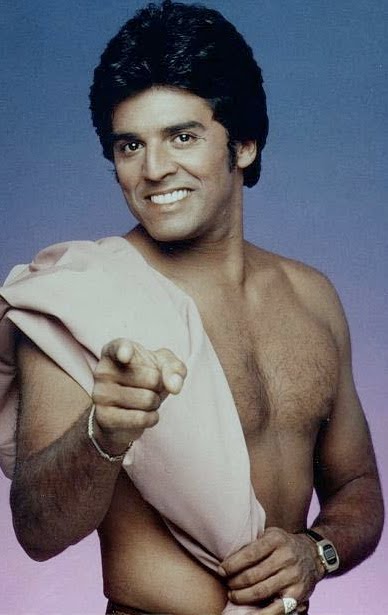









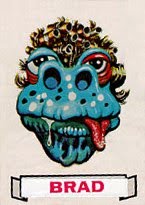























































No comments:
Post a Comment